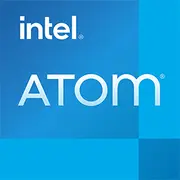Intel Atom x5-E3940

Intel Atom x5-E3940: The Hidden Potential of a Budget Processor in 2025
(Relevant as of April 2025)
Architecture and Process Technology: Apollo Lake and the Balance of Efficiency
The Intel Atom x5-E3940 processor, released in 2016, is still found in budget laptops due to its energy efficiency and compactness. It is built on the Apollo Lake architecture with a 14 nm process technology, which is considered outdated by 2025, but is justified in devices with minimalist requirements.
- Cores and Threads: 4 cores, 4 threads (no Hyper-Threading).
- Clock Frequencies: Base — 1.6 GHz, maximum in turbo mode — 1.8 GHz.
- iGPU: Integrated graphics Intel HD Graphics 500 with 12 execution units (EUs) and a frequency of up to 600 MHz.
Architecture features:
- Supports DDR3L/LPDDR3 memory up to 8 GB (frequency 1866 MHz).
- Lack of AVX/AVX2 instructions — this limits compatibility with modern software for machine learning.
- The iGPU is capable of decoding 4K video via the H.265 (HEVC) codec, but is not suitable for rendering.
Example: In 2025, such chips are commonly found in compact convertible laptops, like the ASUS Transformer Mini, where a passive cooling system (no fans) is important.
Power Consumption and TDP: Why 10 Watts is an Advantage
The processor's TDP is 10 W, making it ideal for ultraportable devices.
- Idle Consumption: About 2-3 W, thanks to Speed Shift technology (quick switching between C0-C10 states).
- Peak Load: Up to 9-10 W, allowing for the absence of active cooling.
Tip: Laptops powered by the Atom x5-E3940 often have a thin profile (up to 15 mm) and weigh less than 1.2 kg. For example, Lenovo Ideapad D330 (2024) offers a 10-hour battery life.
Performance: What Can It Handle?
The processor is geared towards basic tasks, but even in 2025, it can handle:
1. Office Work:
- Google Docs, MS Office 365 — runs smoothly with 5-10 tabs open in a browser.
- Multitasking: Simultaneous work with text, email, and messaging applications is possible, but with limitations (e.g., 4 GB RAM is the minimum).
2. Multimedia:
- Watching YouTube in 1080p/4K (with hardware acceleration).
- Basic photo editing in Lightroom Mobile (slowly, but doable).
3. Gaming:
- Older games: Half-Life 2, Minecraft (on low settings, 720p, 25-30 FPS).
- Modern browser games: Roblox, Among Us.
Turbo Boost: The acceleration to 1.8 GHz works for a short time (3-5 seconds), after which the frequency drops due to TDP limitations.
Usage Scenarios: Who is the Atom x5-E3940 Suitable For in 2025?
1. Students: For note-taking, online courses, and Zoom sessions.
2. Office Workers: Working with documents and cloud services.
3. Media Center Users: Connecting to TVs via HDMI for streaming.
4. Educational Devices: School laptops like HP ProBook x360 11 G9 EE (price: $250-$300).
Limitations:
- Video editing, 3D modeling, and modern gaming are not feasible.
- Running Windows 11: Requires optimization (better to use Linux or Chrome OS).
Battery Life: How 10 Watts Translate to 10 Hours of Use
Laptops powered by the Atom x5-E3940 are equipped with batteries of 30-40 Wh capacity, allowing for:
- 10-12 hours of document work (50% brightness, Wi-Fi on).
- 6-7 hours of streaming video (Netflix, YouTube).
Power-Saving Technologies:
- Panel Self Refresh: Reduces CPU load when displaying a static image.
- Dynamic Tuning: Automatically manages frequency based on load.
Tip: Disable background applications and use browsers with low RAM consumption (e.g., Microsoft Edge in Eco mode).
Comparison with Competitors: Who is in the Same Class?
1. AMD Athlon Silver 3050e (Zen, 2 cores/4 threads, 6 W):
- Better performance in multi-threaded tasks (+15-20%).
- Laptop prices: $300-$400.
2. Apple A14 Bionic (in iPad 10th generation):
- 3-4 times more powerful, but iOS ecosystem limits software availability.
- Price: $450 (new iPad).
3. Intel Celeron N5100 (Jasper Lake, 4 cores/4 threads, 6 W):
- More modern process technology (10 nm), supports DDR4.
- Laptops starting at $350.
Conclusion: The Atom x5-E3940 lags behind modern counterparts but wins on price (devices under $300).
Pros and Cons: Is It Worth Buying in 2025?
Pros:
- Low price of devices ($200-$300).
- Passive cooling — complete silence.
- Sufficient for basic tasks and Linux systems.
Cons:
- Weak upgrade options: Often non-removable RAM and SSD.
- Limited support for Windows 11.
- Low performance in multitasking.
Laptop Selection Recommendations
1. Type of Device:
- Ultrabook: For example, Acer Swift 1 (13.3", 1.1 kg, 8 GB RAM, $279).
- Convertible: Dell Inspiron 11 3195 (touchscreen, stylus, $299).
2. What to Look For:
- RAM: Minimum 4 GB, better 8 GB.
- Storage: Only SSD (even 128 GB is enough for the system).
- Screen: Full HD is rare, but HD (1366x768) is acceptable.
3. OS: Chrome OS or Linux (Manjaro, Ubuntu) will improve responsiveness.
Final Conclusion: Who is the Atom x5-E3940 Designed For?
This processor is a choice for those who:
- Seek an extremely cheap laptop for study or text work.
- Value battery life and silence.
- Do not plan to use resource-intensive applications.
Key Benefits:
- Price under $300.
- 10+ hours of work without plugging in.
- Compactness and portability.
Alternative: If the budget allows for $350 or more, it's better to choose laptops with Celeron N5100 or AMD Athlon Silver — they will last longer.
The Atom x5-E3940 is not a powerful chip, but in 2025, it remains a niche solution for undemanding users.
Basic
CPU Specifications
Memory Specifications
GPU Specifications
Benchmarks
Compared to Other CPU
Share in social media
Or Link To Us
<a href="https://cputronic.com/cpu/intel-atom-x5-e3940" target="_blank">Intel Atom x5-E3940</a>